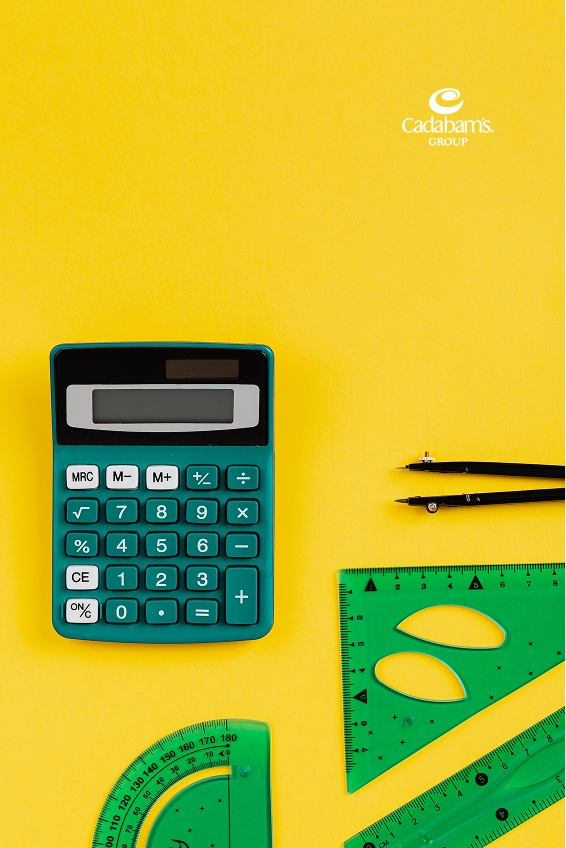Pica Disorder
Pica disorder involves eating non-food items and may coexist with anxiety, panic disorder, or agoraphobia. It can lead to serious health complications, especially if left untreated for extended periods.
Rehabilitation addresses emotional triggers, nutritional gaps, and builds lasting behavioural change through structured psychological support, multidisciplinary care, and close clinical monitoring to ensure safety and recovery.
Signs and Symptoms of Pica Disorder
Physical Symptoms and Health Complications
- Intestinal blockages
- Tooth damage
- Lead or chemical poisoning (especially from paint or soap)
- Parasitic infections
- Malnutrition
- Gastrointestinal injuries
Psychological Symptoms and Behavioural Patterns
- Compulsive urges
- Distress and shame
- Anxiety and intrusive thoughts
- Secrecy and isolation
Our Professionals
Causes of Pica Syndrome
The causes of pica syndrome are diverse and often multifactorial. Contributing factors include nutritional, psychological, and environmental elements, each requiring careful assessment for tailored pica treatment.
Nutritional Deficiencies
Deficiencies in iron (as seen in pica syndrome anaemia), zinc, or calcium can trigger pica cravings. The body may instinctively seek non-food items to compensate for the lack of essential nutrients—a physiological response misinterpreted as hunger. Addressing these deficiencies through supplementation and dietary adjustments is a fundamental component of pica treatment, helping to eliminate biological triggers that drive the behaviour.
Developmental and Mental Health Conditions
Pica is more prevalent in individuals with autism spectrum disorder, intellectual disabilities, and genetic conditions. It can also occur in people with mental health conditions, whether spontaneous or inherited. In these cases, pica may stem from sensory-seeking behaviour, reduced impulse control, or as a form of emotional regulation. Comprehensive behavioural therapy and psychiatric support play a key role in mitigating risks and developing safer coping mechanisms.
Stress and Anxiety
Chronic stress, trauma, or anxiety can lead to pica as a form of self-soothing. The repetitive behaviour provides temporary relief, serving as a coping mechanism during emotional distress or overwhelming situations. This form of pica is often automatic, subconscious, and difficult to control without therapeutic intervention. Relaxation training, mindfulness, and trauma-informed care can significantly reduce symptom severity over time.
Childhood Adversity and Neglect
Children experiencing neglect, abuse, or low parental supervision may develop pica syndrome as a way to self-regulate. In some cases, ingesting unusual substances becomes a means of expressing unmet emotional needs or seeking connection. These behaviours often coexist with attachment issues or developmental delays and require early, structured intervention that includes family education and emotional support systems.
Cultural and Learned Behaviours
In some cultures, eating clay or soil is ritualistic. For instance, women in parts of South Africa engage in geophagy. Similarly, visitors to El Santuario de Chimayó eat dirt for healing. Such pica symptoms are culturally reinforced. In these contexts, what appears to be disordered behaviour may be symbolic, spiritual, or communal. Differentiating cultural practice from clinical pathology is key to ensuring respectful, informed pica treatment approaches.
Who Is at Risk of Developing Pica?
Pica disorder can affect individuals across all age groups and backgrounds, but certain populations are at significantly higher risk due to biological, psychological, or environmental vulnerabilities. Early identification of at-risk individuals is key to timely intervention and reducing long-term complications.
Pica disorder can affect:
- Pregnant women (especially with pica syndrome anaemia)
- Children with developmental delays
- Individuals with OCD, autism, or schizophrenia
- People with brain injury or trauma (e.g., pica stroke)
- Those facing extreme nutritional deficiencies or chronic stress

Types of Pica Disorder
Pica can present in various forms, depending on the type of non-food item consumed. These behaviours are often linked to nutritional deficiencies, psychological stress, or developmental conditions.
- Geophagia: Involves eating soil, clay, or sand. It may increase the risk of parasitic infections or gastrointestinal issues.
- Pagophagia: A compulsion to consume ice or freezer frost, often associated with iron-deficiency anaemia.
- Amylophagia: Characterised by the craving for starches such as raw rice, cornstarch, or laundry starch.
Other reported substances include charcoal, chalk, paper, hair, ashes, baking soda, paint chips, pencil erasers, and sand. Identifying the specific type helps guide targeted interventions and nutritional assessment.
Emergency service
Find nearest mental health center now

Treatment and Rehabilitation Options for Pica Disorder
Effective pica treatment requires a comprehensive, personalised approach addressing both biological and behavioural components of the condition. Combining therapeutic, medical, and social support enhances outcomes and promotes long-term behavioural transformation.
Behavioural and Cognitive Therapies
Therapies like CBT and Applied Behaviour Analysis (ABA) focus on identifying triggers, building awareness, and replacing compulsive actions with safer behaviours. Techniques like differential reinforcement help redirect the need to consume non-food items. These approaches are tailored to individual behaviour patterns and cognitive capacity. Parent training, habit reversal, and positive reinforcement strategies are also employed to maintain engagement and reinforce adaptive coping mechanisms. Behavioural therapy is foundational in both paediatric and adult pica treatment settings.
Pharmacological Interventions
Though no medication specifically treats pica disorder, associated symptoms, like anxiety or OCD, may be managed pharmacologically. In some cases, SSRIs or antipsychotics are used, especially when compulsions stem from co-occurring mental health conditions. Pharmacological interventions are often introduced when behavioural therapies alone are insufficient. Medication may help regulate underlying neurochemical imbalances, reduce impulsivity, and increase receptivity to therapy. Close psychiatric monitoring is essential to manage side effects and assess efficacy throughout the pica treatment journey.
Nutritional and Medical Support
Treating deficiencies is vital to managing pica symptoms. Iron or zinc supplements are often prescribed. Dieticians and doctors collaborate to monitor improvements, ensuring the individual’s body receives what it needs safely and nutritiously. This medical layer of care is crucial in reversing physiological triggers and supporting overall health. Regular lab assessments, customised meal planning, and hydration strategies may also be implemented to prevent relapse and ensure nutritional rehabilitation becomes a sustainable part of recovery.
Rehabilitation and Long-Term Support
Rehabilitation for pica disorder involves structured therapy programmes, ongoing counselling, and behavioural interventions tailored to individual needs. Support groups and community resources play a vital role in promoting emotional stability, reducing relapse, and encouraging long-term recovery through consistent guidance, peer connection, and holistic care approaches. Rehabilitation may also include vocational training, life-skills development, and family therapy. These components help individuals reintegrate socially, sustain motivation, and maintain recovery through continued structure and support beyond the initial treatment phase.
When to Seek Professional Help for Pica Disorder
If unusual eating habits persist or begin affecting daily life, it’s important not to delay evaluation. Early intervention reduces risks and improves recovery outcomes significantly.
Reach out if you or someone you know:
- Regularly eats non-food items for over a month
- Exhibits signs of nutritional deficiency
- Shows behavioural changes, shame, or secrecy
- Faces physical symptoms like stomach pain or blockages
Early pica treatment can prevent complications and support emotional healing. Seeking timely help offers clarity, structured care, and a path toward long-term wellness and confidence.
Pica Disorder Is Manageable—Get Expert Support at Cadabam's
Pica may feel overwhelming, but you're not alone. With expert guidance, personalised therapy, and holistic care, recovery is possible. Whether you're navigating physical symptoms, emotional struggles, or long-standing behavioural patterns, our multidisciplinary team is here to support you. At Cadabam’s, we walk with you—one step at a time—toward safety, self-awareness, and healing. From your first consultation to long-term recovery, we provide compassionate, judgment-free care tailored to your unique needs and journey.
If you are searching for a solution to your problem, Cadabam’s Rehabilitation Centre can help you with its team of specialised experts. We have been helping thousands of people live healthier and happier lives for 30+ years. We leverage evidence-based approaches and holistic Pica treatment methods to help individuals effectively manage Pica Disorder. Get in touch with us today. You can call us at +91 96111 94949.
Listen to Our Expert Insights on Pica Disorder
Our centres where we treat Pica Disorder
Diagnosis and Tests for Pica Disorder
Diagnosing pica disorder involves clinical evaluation, understanding patient history, and ruling out other conditions. Medical professionals assess both the behaviour and its impact on physical and psychological well-being.
Diagnostic Criteria for Pica
To qualify as pica disorder:
- The behaviour must persist for over a month.
- It should occur in someone developmentally beyond toddlerhood.
- It must not be part of culturally accepted practices or better explained by another mental illness.
These criteria help distinguish pathological pica from occasional ingestion or culturally normative behaviours. Proper classification ensures the development of an effective pica treatment plan and prevents misdiagnosis that may delay recovery.
Exceptions That May Rule Out a Diagnosis
What is pica and what isn’t?
- Culturally accepted behaviours like ritual soil eating don’t qualify.
- In conditions like autism, pica is diagnosed only when the behaviour causes harm or impairs functioning significantly.
It's crucial to assess context, frequency, and clinical impact before making a formal diagnosis, especially in populations with overlapping developmental or psychiatric conditions.
Medical Tests to Diagnose Pica
Doctors may conduct:
- Blood tests to identify anaemia or deficiencies
- Stool tests for infections or parasites
- Imaging (X-rays, endoscopy) to check for blockages
- Psychological assessments to understand compulsions and risk factors
These tests help evaluate underlying causes and rule out conditions that mimic pica. A full diagnostic workup is essential to guide medical, nutritional, and behavioural pica treatment strategies tailored to each individual's needs.
Prevention and Management of Pica
Management of pica requires proactive support, especially when vulnerable individuals are involved.
Strategies for Individuals and Caregivers
Effective management begins at the individual and caregiver level, where early intervention, education, and environmental control can greatly reduce episodes of pica. Personalised strategies improve safety and promote healthier coping mechanisms.
- Identify triggers: Recognise emotional, environmental, or nutritional factors that trigger pica behaviours to help prevent them.
- Create a safe environment: Remove harmful non-food items from easy reach to prevent accidental ingestion and reduce temptation.
- Use behavioural interventions (CBT, positive reinforcement): Therapies like CBT can reshape thought patterns, while small rewards encourage safe behaviours.
- Correct deficiencies through guided supplementation: Addressing nutritional gaps like iron or zinc can reduce biological cravings for non-food items.
- Provide emotional support and mindfulness strategies: Offer consistent reassurance and teach calming techniques to manage underlying distress.
- Monitor progress and update care plans: Regularly track behavioural changes and adapt interventions to suit evolving needs.
- Connect with support groups and resources: Join peer networks or therapy communities to gain insight, encouragement, and shared experiences.
Building a Supportive Environment
Creating a nurturing and informed environment is essential in preventing relapse and ensuring lasting progress. Education, structure, and empathy play a key role in supporting individuals with pica.
- Educate family members on what is pica disorder and its emotional toll: Help loved ones understand that pica is a complex condition, not a habit or misbehaviour.
- Encourage peer support in schools or therapy groups: Promote inclusion and empathy by involving peers in therapeutic settings.
- Maintain open, non-judgmental communication: Create a safe space where the individual feels heard and supported without shame.
- Collaborate with mental health professionals: Partner with therapists or psychiatrists to ensure consistent, evidence-based care.
- Design safe home spaces with structured routines: Establish predictable, nurturing environments that support emotional stability and reduce stress.
Subscribe to our newsletter
Find out about centres, daily updates and more about mental health

Why Cadabam's?
Pica Disorder impacts both physical and psychological health, requiring a comprehensive, multidisciplinary approach. At Cadabam’s, we have 30+ years of experience treating eating and behavioural conditions using integrated, evidence-based care. Our expert team of psychiatrists, psychologists, dieticians, and rehab specialists create personalised plans addressing nutritional gaps and emotional triggers. With 24/7 monitoring and modern rehab facilities, we ensure a safe recovery environment. Services include nutritional therapy, behavioural interventions, family counselling, and relapse prevention. Cadabam’s supports you through every stage of the healing journey.
Facilities & Amenities
Frequently Asked Questions
Stopping pica requires identifying triggers, correcting nutritional deficiencies, and using behavioural therapy. Professional support, structured routines, and family involvement are key to sustaining long-term recovery.
Pica may develop after a stroke if the brain regions governing impulse control or cognition are affected. Though rare, post-stroke pica requires neurological and behavioural assessment to tailor Pica treatment and ensure safety.
Pica is commonly associated with iron deficiency anaemia. The body may crave non-food items, like ice or clay, due to a lack of iron, which makes supplementation and dietary changes essential to managing pica symptoms.
Yes, pica can occur in adults, especially those with mental health conditions, developmental disorders, or nutritional deficiencies. Adult cases may go unnoticed longer due to stigma, but effective Pica treatment and support are available for long-term management of Pica.
Common pica cravings include dirt, clay, ice, paper, hair, paint chips, and soap. These cravings are often linked to nutritional deficiencies, emotional distress, or cultural influences and may vary based on age, environment, and underlying health conditions.
Pica symptoms include persistent cravings for non-food items like dirt or ice, gastrointestinal discomfort, nutritional deficiencies, and signs of poisoning or infections. Behavioural signs such as secrecy or compulsive ingestion are also common indicators of pica disorder.
Case Studies
Our Programs
Our Testmonials
Blogs you may be interested in
Helpline at your fingertips
+91 9611194949

.webp)








-min.webp)



.avif)

-min.webp)

.avif)

.avif)
.webp)

